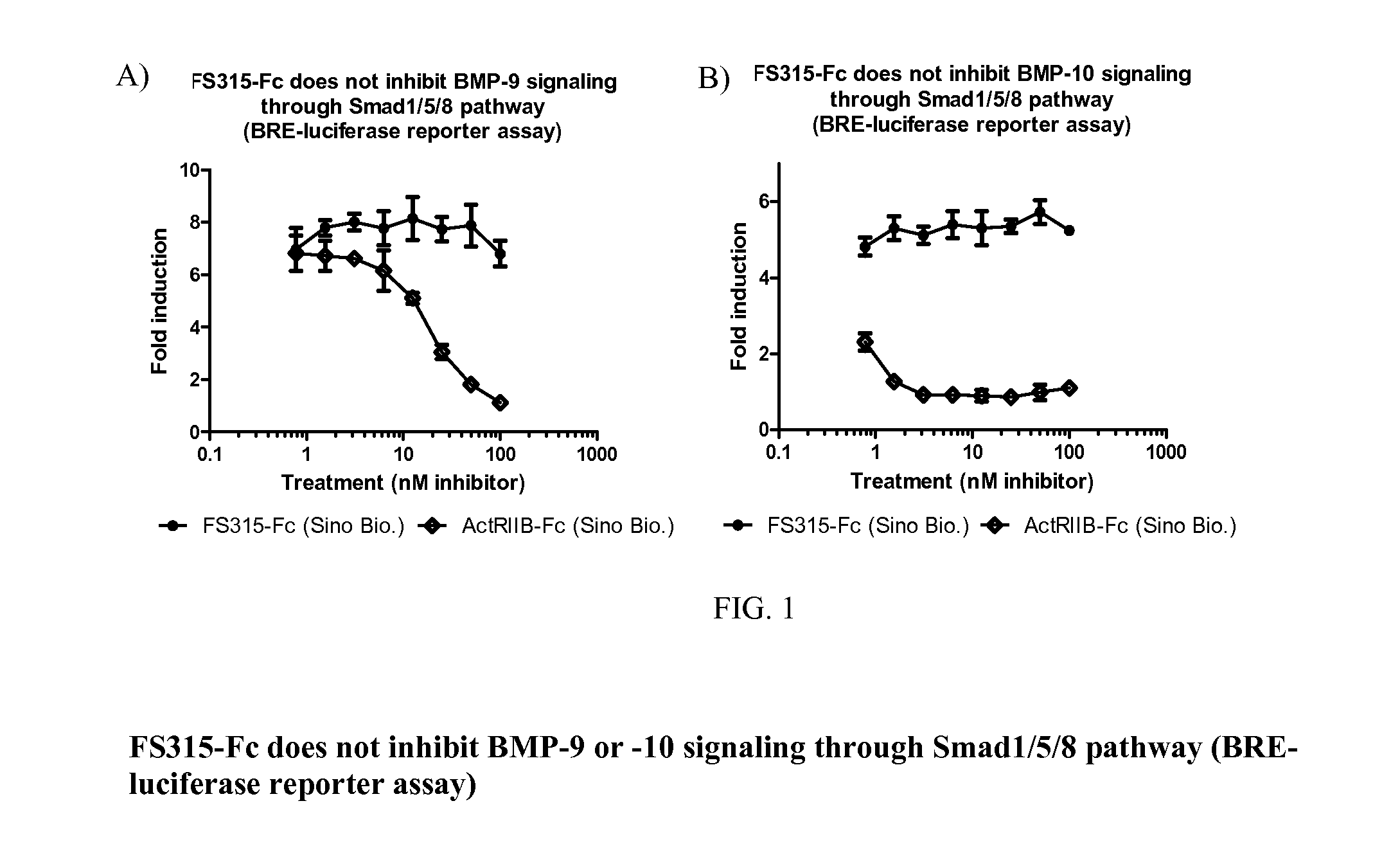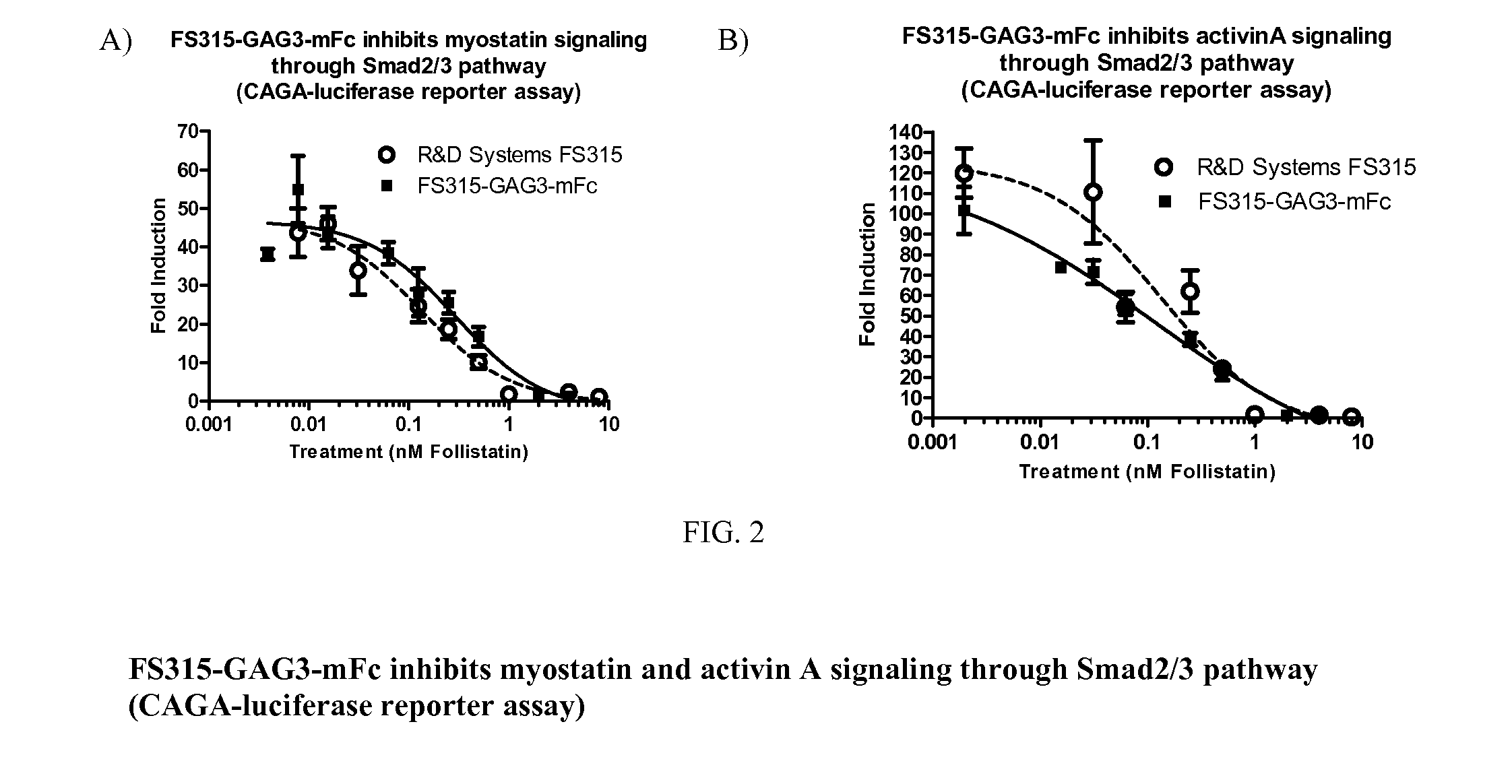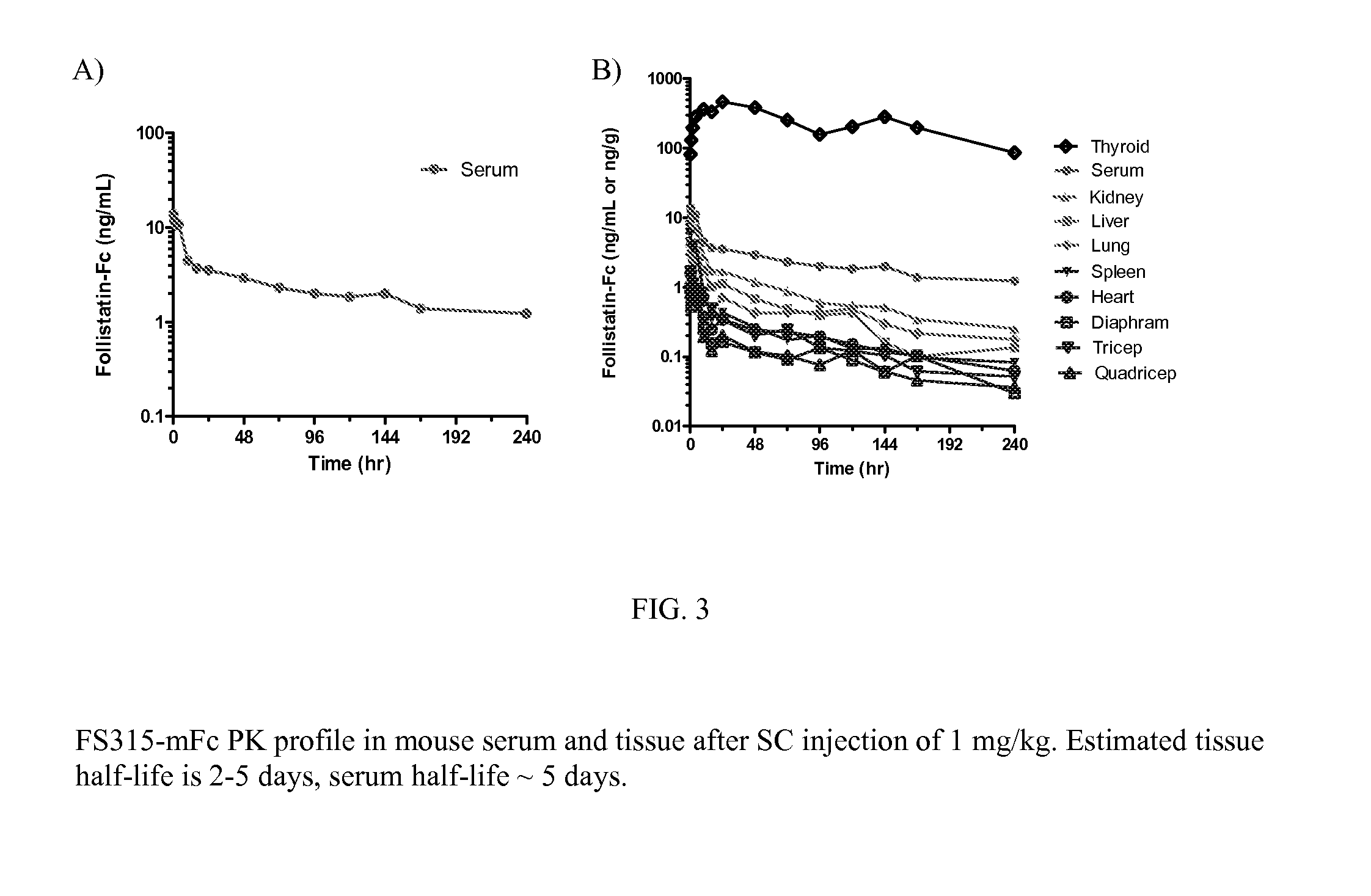Follistatin in treating duchenne muscular dystrophy
a duchenne muscular dystrophy and follistatin technology, applied in the field of follistatin in treating duchenne muscular dystrophy, can solve the problems of discouraged scientists and clinicians from further developing follistatin, interfere with the normal structure and function of wild-type follistatin protein, poor pharmacokinetic/pharmacodynamic (pk/pd) properties, etc., to prolong the serum half-life, reduce muscle fibrosis and/or
- Summary
- Abstract
- Description
- Claims
- Application Information
AI Technical Summary
Benefits of technology
Problems solved by technology
Method used
Image
Examples
example 1
Follistatin Targets Myostatin and Activin Specifically
[0174]This example illustrates Follistatin binding to target and non-target ligands to evaluate safety of Follistatin as a protein therapeutic for treating DMD. Without wishing to be bound by theory, it is contemplated that activation of Smad2 / 3 pathway by myostatin and activin leads to inhibition of myogenic protein expression. As a result, myoblasts can't differentiate into muscle. Therefore, myostatin and activin are considered viable targets for muscle regeneration. However, many myostatin and activin antagonists such as soluble activin receptor type IIB (sActRIIB) also bind bone morphogenetic proteins (BMPs) due to certain structural similarities. BMPs, especially, BMP-9 and BMP-10, are considered pivotal morphogenetic signals, orchestrating tissue architecture throughout the body. Inhibition of such BMPs may lead to undesired pathological conditions. As described in detail below, the experimental data described in this exam...
example 2
Follistatin Fusion Protein FS315-GAG3-mFc has Extended Serum Half-Life
[0180]Prior to our invention, it was reported that follistatin has a short serum half-life, which is a concern for developing follistatin as a protein therapeutic. For example, typical commercial FS315 protein has a serum half-life of about an hour. In this Example, the in vivo half-life of FS315-GAG3-mFc fusion protein was determined and it has a significantly extended serum half-life.
[0181]Specifically, an imprinting control region (ICR) mouse was selected as a model and I125-labeled FS315-GAG3-mFc was administered subcutaneously at 1.0 mg / kg (˜2 μCi / animal). After administration, samples of serum and tissues were taken up to 10 days post-injection. The tissues sampled were: thyroid, liver, kidney, lung, spleen, diaphragm, heart, quadriceps and triceps. Exemplary results of the serum samples are shown in FIG. 3A. As can be seen, the serum half-life of FS315-GAG3-mFc is approximately 5 days, which is surprisingly...
example 3
In Vivo Efficacy of FS315-GAG3-mFc
[0183]This Example demonstrates that administration of follistatin (e.g., FS315-GAG3-mFc) to mdx mouse model of Duchenne muscular dystrophy results in a trend of increased muscle mass even at a low dose of 1 mg / kg. In this example, the terms “FS315-GAG3-mFc”, “FS315-Fc” and “FS315-mFc” used interchangeably.
[0184]Specifically, in this study, 45 mdx mice were treated with empty vehicle, 0 mg / kg, 1.0 mg / kg or 8 mg / kg FS315-GAG3-mFc. Animals in the vehicle or treatment groups received two subcutaneous (interscapular) injections per week for the duration of the study and follistatin fusion protein levels were assessed through retro-orbital sampling.
[0185]Half of the vehicle treated control animals were sacrificed with the 1 mg / kg FS315-Fc group, and the remaining vehicle treated animals along with the untreated control animals, were sacrificed with the 8 mg / kg treatment group. Exemplary treatment schedule was as shown in Table 5A and B:
Table 5. Exemplary...
PUM
| Property | Measurement | Unit |
|---|---|---|
| Fraction | aaaaa | aaaaa |
| Fraction | aaaaa | aaaaa |
| Fraction | aaaaa | aaaaa |
Abstract
Description
Claims
Application Information
 Login to View More
Login to View More - R&D
- Intellectual Property
- Life Sciences
- Materials
- Tech Scout
- Unparalleled Data Quality
- Higher Quality Content
- 60% Fewer Hallucinations
Browse by: Latest US Patents, China's latest patents, Technical Efficacy Thesaurus, Application Domain, Technology Topic, Popular Technical Reports.
© 2025 PatSnap. All rights reserved.Legal|Privacy policy|Modern Slavery Act Transparency Statement|Sitemap|About US| Contact US: help@patsnap.com



